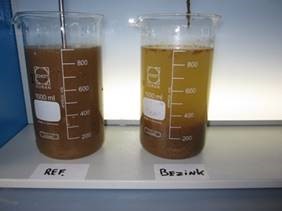All types of process wastewaters have their own specific characteristics. One may have a low pH, the other many undissolved materials and yet another may have high concentrations of dissolved matter that are difficult to remove. These are just a few examples of the many characteristics of wastewater flows.
It is always important to visually inspect the water and see what it looks like. Such an inspection can often already indicate which methods are or aren’t appropriate. In the lab, wastewater can be treated in a range of ways in order to provide a first initial idea of the possibilities. These include filtration, coagulation/flocculation, aeration or chemical oxidation.
By applying various techniques in the lab, a first rough selection can already be made of the possible techniques. If a particular technique stands out, further research can be carried out in order to gain insights into the possible effectiveness and the extent of the eventual purification. 
